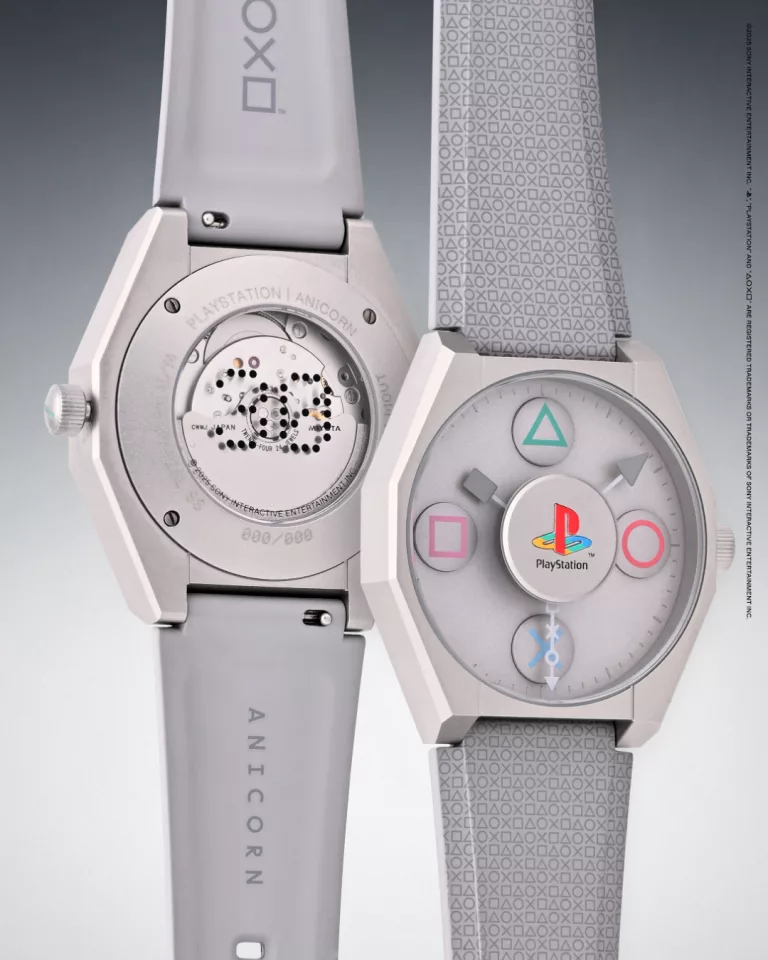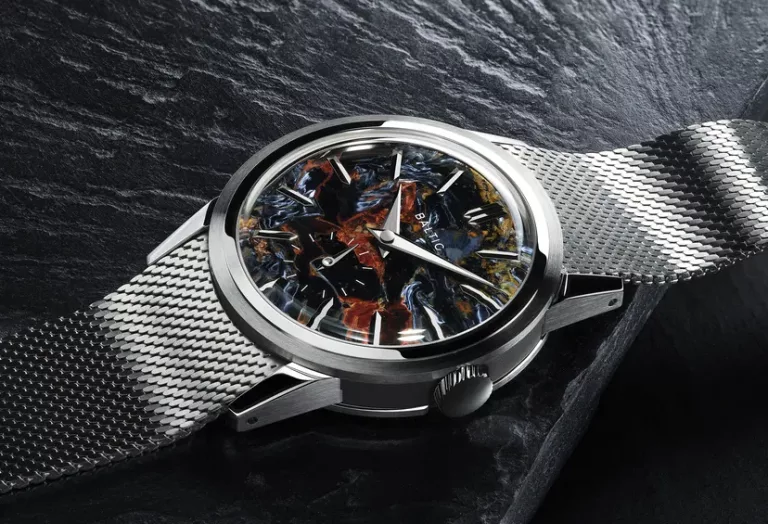Who Was Gérald Genta & Why It Matters
Few names in watchmaking command respect like Gérald Genta. Born in Geneva in 1931, Genta would go on to redefine luxury horology, merging architectural inspiration with technical mastery. His designs are renowned for transforming stainless steel into a canvas for luxury, pioneering the integrated bracelet, and making sports watches sophisticated and collectible.
For collectors and enthusiasts, Gérald Genta’s creations are more than timepieces—they are statements of culture, design, and investment value, retaining significance across generations. There is a reason he is sometimes referred to as the “Picasso of watchmaking”.
While this page is mostly dedicated to affordable watches and collecting within reach, we believe it’s equally important to highlight the stories of the icons and the people who shaped watchmaking. This article is part of that commitment, focusing on what we believe are Gérald Genta’s 7 most iconic watch designs—each shaping horology and collector culture through design, technical innovation, and timeless appeal.
This article is about what we believe are Gérald Genta’s 7 most iconic watch designs, each shaping horology and collector culture through design, technical innovation, and timeless appeal.
Universal Genève Polerouter (1954)
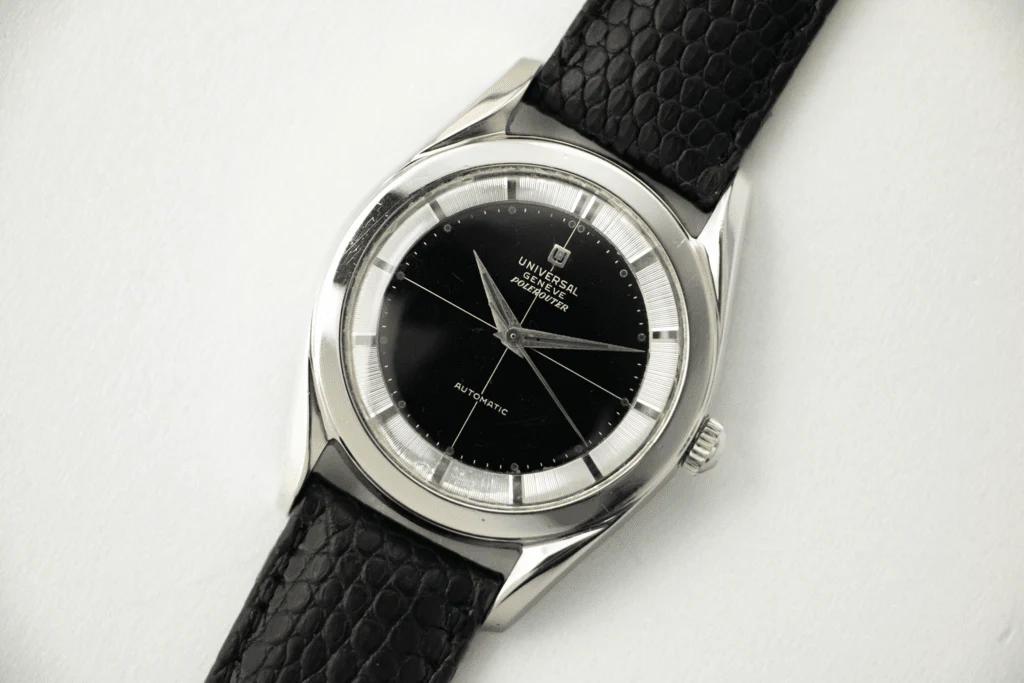
Universal Genève Polerouter
In 1954, Gérald Genta, at just 23, designed the Universal Genève Polerouter to commemorate the pioneering polar flights of Scandinavian Airlines (SAS), which flew from Copenhagen to Los Angeles by way of the North Pole (now the name makes a lot of sense). Featuring a 34.5mm case with elegantly curved bombé lugs and a machine-turned inner dial ring, the Polerouter offered timeless mid-century aesthetics.
In 1955, it was renamed “Polerouter” and upgraded with the innovative Calibre 215 micro-rotor movement, delivering automatic winding in a slim profile, a technical marvel of its time. Variants like the Polerouter Jet and Polerouter Sub maintained the elegant DNA while offering unique utility, ensuring the Polerouter’s place in collectors’ hearts.
The Polerouter line expanded throughout the late 1950s and 1960s to include new variants such as the Polerouter Jet and Polerouter Sub.
Omega Constellation “C-Case” (1964)
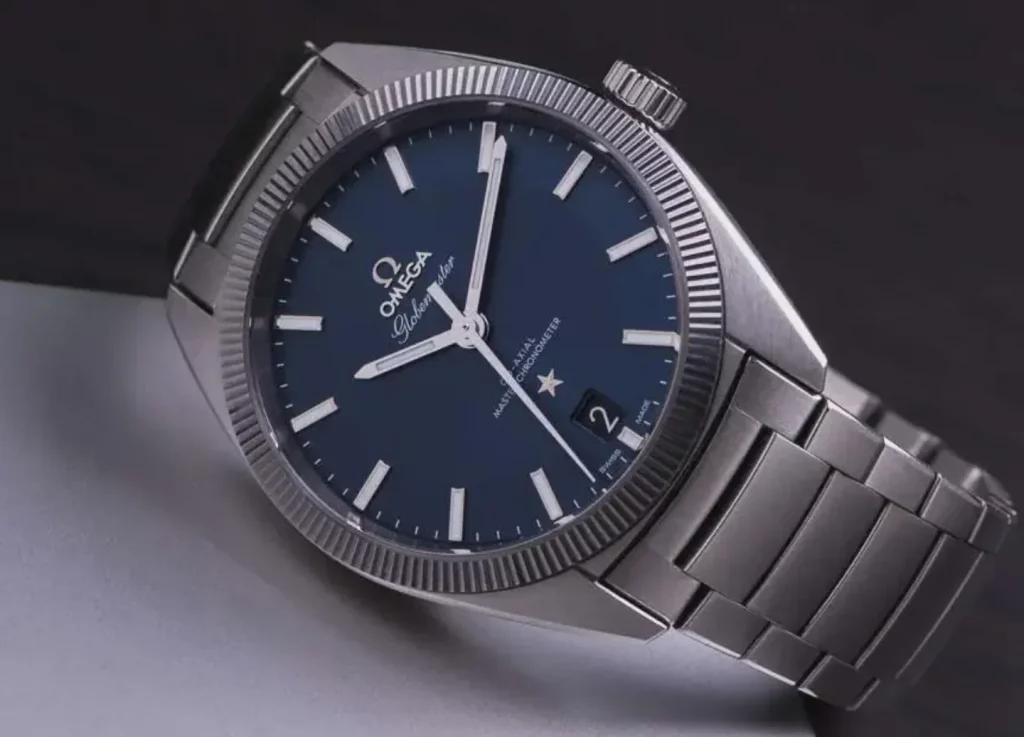
Omega Constellation “C-Case”
Genta’s influence on the Omega Constellation during the late 1950s and 1960s helped define its iconic status. His introduction of the “pie-pan” dial added dimensional depth to the series, a design element adored by collectors.
In 1964, Genta elevated the Constellation further with the “C-Case” design, seamlessly integrating the lugs into a rounded “C” shape for a modern, sophisticated look. Details like knurled bezels and matching metal bracelets showcased Genta’s vision of cohesive design, creating a blueprint for future dress watches.
Later, in the 1980s, Genta’s touch extended to the sometimes forgotten Omega Polaris. Featuring a distinctive titanium and gold case and a clean, integrated bracelet, the Polaris embodied Genta’s knack for merging sportiness with elegance. Its “bullseye” dial layout and lightweight build made it a technical yet stylish piece, proving that even decades into his career, Genta continued to innovate while respecting the DNA of the brands he worked with.
Rolex Cellini King Midas (1964)

Rolex Cellini King Midas
With the Rolex Cellini King Midas, Genta brought avant-garde to Rolex. Inspired by the Parthenon temple in Greece, its angular, asymmetrical case and thick integrated bracelet echoed architectural forms, departing radically from traditional Rolex designs.
Crafted from solid 18k gold, it was the heaviest gold watch of its time, featuring an ultra-thin manual movement rarely seen in Rolex’s lineup. Released as a limited edition and worn by Elvis Presley, the King Midas remains a unique, highly desirable collector’s item, embodying Genta’s daring approach to design.
Audemars Piguet Royal Oak (1972)
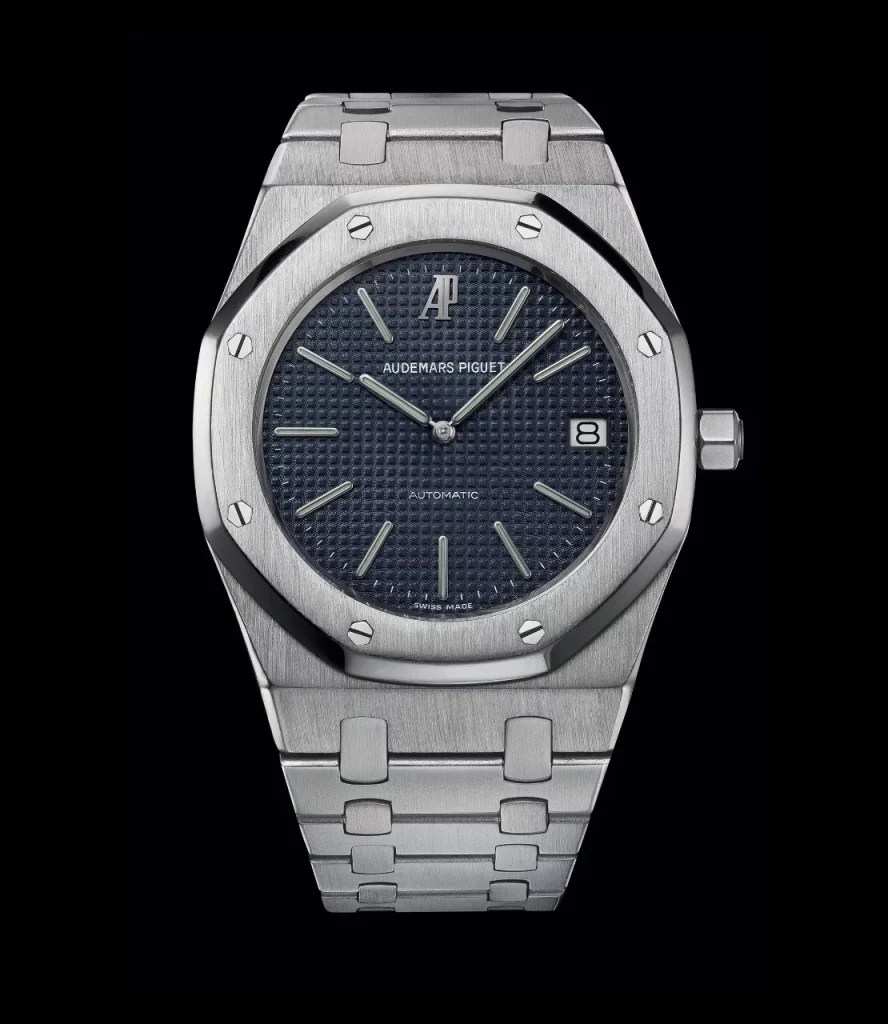
Audemars Piguet Royal Oak
Perhaps Genta’s most famous creation, the Audemars Piguet Royal Oak, redefined luxury watchmaking. Inspired by a diver’s helmet, it featured an octagonal bezel with visible screws and an integrated bracelet—a revolutionary design in 1972 when luxury was synonymous with gold, not steel.
Powered by the ultra-thin Calibre 2121, the Royal Oak offered a slim yet robust profile, priced higher than many gold watches at the time. It pioneered a shift in luxury value from material to design, craftsmanship, and engineering, becoming AP’s flagship and an enduring horological icon.
Patek Philippe Nautilus (1976)
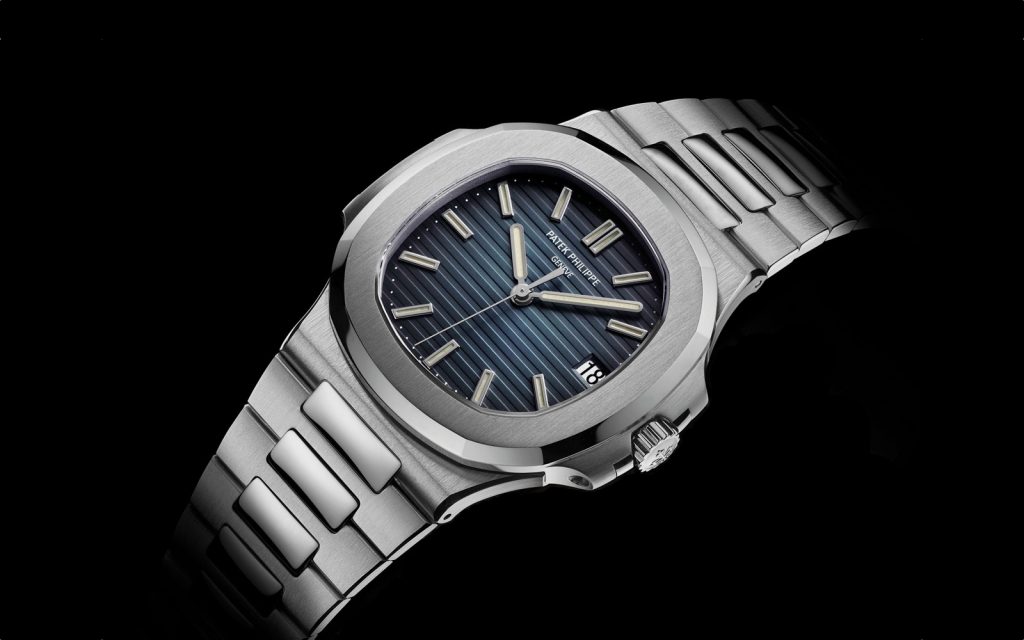
Patek Philippe Nautilus
Genta continued to innovate with the Patek Philippe Nautilus, introduced in 1976. Drawing inspiration from a ship’s porthole, the watch featured a rounded octagonal bezel with side “ears” resembling hinges, paired with a horizontally embossed dial and integrated bracelet.
Offering 120M water resistance, it was a technical and design marvel in luxury sports watches, blending durability with sophistication. Today, the Nautilus stands as one of the most sought-after timepieces worldwide, representing Genta’s forward-thinking design language within traditional haute horlogerie.
Beyond its aesthetic appeal, the Nautilus captured a cultural shift toward versatile luxury, becoming a symbol of understated elegance that could transition seamlessly from boardroom to leisure without compromising prestige. Its slim yet robust profile, paired with Patek Philippe’s meticulous finishing and reliable movement, cemented the Nautilus as a grail piece for collectors, reflecting a perfect harmony between technical prowess and timeless design.
Omega Seamaster Polaris (1982)
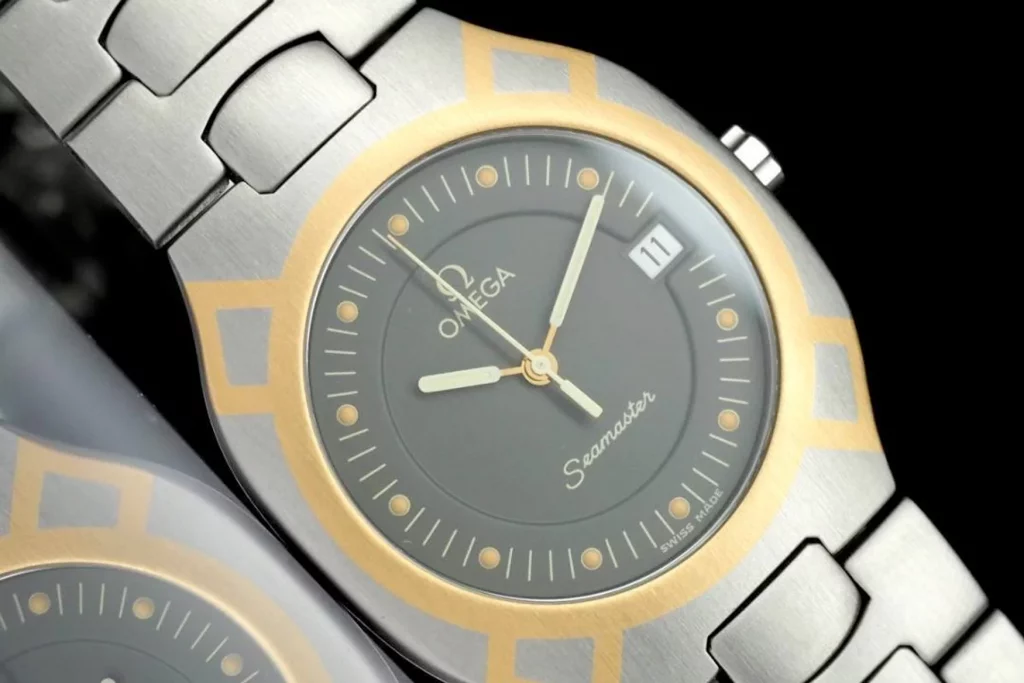
Omega Seamaster Polaris
In 1982, Gérald Genta brought his forward-thinking design language to the Omega Seamaster line with the Seamaster Polaris, a sleek, integrated-bracelet sports watch that stood apart from traditional dive models of the era. Featuring a slim titanium case with 18k gold inlays in both the geometric bezel and bracelet, the Polaris was lightweight yet visually striking, capturing a modern, architectural feel.
The Polaris offered various models, including multifunction quartz versions with chronograph, alarm, and dual-time capabilities, showcasing technical versatility while retaining its refined aesthetic. Though often overshadowed by Genta’s Royal Oak and Nautilus, the Seamaster Polaris remains an underappreciated gem within his portfolio, embodying the integrated bracelet ethos and contemporary luxury that define Genta’s legacy in watch design.
IWC Ingenieur SL (1976)
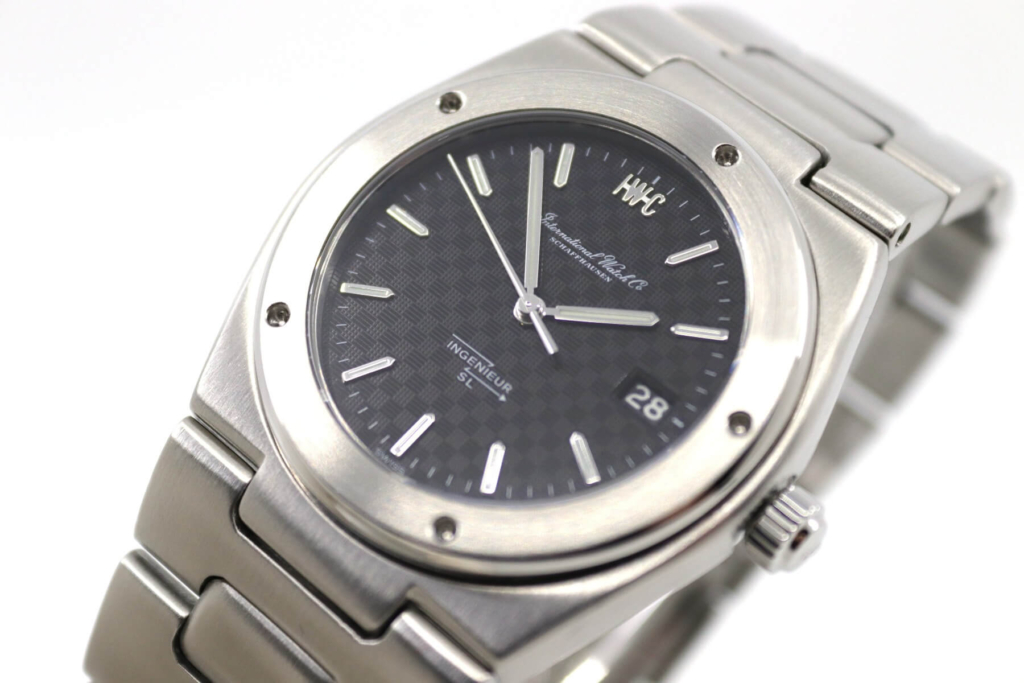
IWC Ingenieur SL
In 1976, Genta reimagined the IWC Ingenieur, transforming it into the Ingenieur SL “Jumbo”, a bold 40mm stainless steel sports watch that captured the spirit of industrial-modern design. Its integrated H-link bracelet and five-point bezel with exposed screws echoed the architectural aesthetic Genta pioneered with the Royal Oak, while setting the Ingenieur apart with a more rugged, tool-oriented identity.
The checkerboard-patterned dial added depth and visual intrigue, while the robust anti-magnetic construction stayed true to the Ingenieur’s heritage as a technical instrument for engineers. The watch’s substantial wrist presence, combined with its integrated bracelet and distinctive design language, established it as a luxury sports watch with practical durability.
Over time, the Ingenieur SL has gained recognition among collectors for its unique place in Genta’s portfolio—offering the signature integrated steel design with a technical twist, making it an enduring icon within IWC’s lineup.
Gérald Genta’s Legacy in Horology
Gérald Genta reimagined what a luxury watch could be, pioneering the concept of stainless-steel sports watches and integrated bracelet designs while blending architecture, art, and engineering in each piece. His work with brands like Universal Genève, Omega, Rolex, Audemars Piguet, Patek Philippe, and IWC has left an indelible mark on horology.
His designs continue to influence modern watch aesthetics while serving as valuable investments, showcasing the enduring power of creativity in watchmaking.
Everything You Need to Know About Gérald Genta Watches
Gérald Genta was a Swiss designer known for creating iconic watches like the Royal Oak and Nautilus, revolutionizing luxury watch design with innovative, architecture-inspired concepts.
His most famous designs include the Audemars Piguet Royal Oak and the Patek Philippe Nautilus, which pioneered the luxury sports watch segment.
The Royal Oak featured a steel case, integrated bracelet, and octagonal bezel with exposed screws, redefining luxury watch aesthetics and becoming AP’s flagship.
Its unique porthole-inspired design, integrated bracelet, and sporty yet elegant look, paired with Patek Philippe’s craftsmanship, make it highly desirable among collectors.
Conclusion
Gérald Genta’s journey from the elegant Polerouter to the revolutionary Royal Oak and Nautilus is a testament to timeless design and technical mastery. His influence is seen not just in collections but in the evolution of watch design and the culture of collecting.
Don’t forget to subscribe to our newsletter for more in-depth explorations of iconic timepieces and horological history to help you build your collection with intention and passion.


